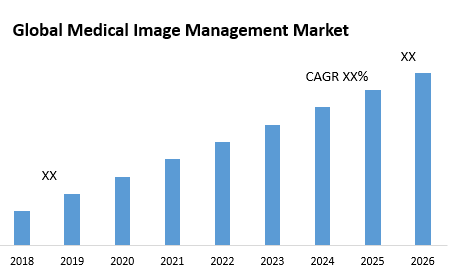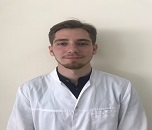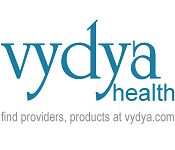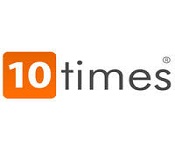
radiology-2022

Theme: The Vast Arena of Radiology in the Wireless World
Meetings International take pride in announcing our “2nd International Conference on Radiology" scheduled during October 19-20, 2022 in Vancouver, Canada which includes stimulating keynote presentations, Oral talks, Workshops/Symposia, Poster presentations and Exhibitions. The conference is mainly focused on Cumulative Correlations in Clinical Radiology. Radiology 2022 is the outstanding event that brings the most professionals, experts, in the field of not only radiology and its related disciplines like orthopedics, neurology and trauma and critical care. We adhere all the viable present developments and technology inventions for a better future in return calling for a safe guarding of human life. We hope this collaboration would be a memorable experience and would bring noticeable impact on your career.
Session 1: Cardiac Imaging
The use of imaging to review biology and uncover biomarkers of human disease provides a window through which we will phenotype disease in vivo, thereby offering a chance for early diagnosis of disease and assessing the potential value of novel therapies. Because the nuances of disease mechanisms and therefore the subtleties of the responses to therapy are key to understanding and treating disease, imaging has become an important tool for revealing pathogenic mechanisms and for developing therapeutic strategies. The miniaturization of imaging devices with dramatic increases in sensitivity and spatial resolution, including the event of quantitative molecular imaging approaches for evaluating physiology and pathobiology at the cellular and molecular levels provide a singular platform for a replacement era in diagnostic imaging. The crucial role of imaging within the early phenotyping of disease, risk assessment, and management guidance is expanding rapidly in ways previously thought unrealistic.
Radiology Congress | Radiology Congress | Radiology Meetings | Radiology Meetings | Interventional Radiology Workshops | Radiology Events | Trauma & Radiology Conferences | Radio science Conferences
Session 2: Nuclear Medicine
Whole-body PETCT, simultaneous whole-body PETMRI, and multimodal molecular imaging systems are recent milestones in nuclear medicine and molecular imaging. These high-end molecular imaging scanners with probes or tracers offer the potential to significantly improve the precision of positioning and quantification of biological processes at the cellular and molecular level in humans and other living systems. However, there are many challenges in image processing and mathematical and statistical modeling to extract physiological and biochemical information from these multimodal imaging data. In recent years, much work has been done on the evaluation of advanced imaging systems, extraction of physiological and biochemical parameters from multimodal imaging, integration of multiparametric imaging, and applications of advanced quantitative molecular imaging in clinical nuclear medicine and biology. This special issue invites some articles to update these researchers on the latest advances in quantitative nuclear medicine and molecular imaging.
Radiology Congress | Radiology Congress | Radiology Meetings | Radiology Meetings | Interventional Radiology Workshops | Radiology Events | Trauma & Radiology Conferences | Radio science Conferences
Session 3: Pulmonary Embolism Scanning
Only about 30% of suspected patients are diagnosed with PD, so non-invasive screening tests are required. Several strategies have recently been proposed to reduce the need for pulmonary angiography to diagnose pulmonary embolism. Several strategies have recently been proposed to reduce the need for pulmonary angiography to diagnose pulmonary embolism. The PIOPED study determined the value of ventilation perfusion lung scanning. Normal perfusion lung scanning actually excluded PE, and under reasonable clinical suspicion, high-probability lung scanning was considered diagnostic. All other lung scan results are not diagnostic.
Radiology Congress | Radiology Congress | Radiology Meetings | Radiology Meetings | Interventional Radiology Workshops | Radiology Events | Trauma & Radiology Conferences | Radio science Conferences
Session 4: Neuro-Imaging
In recent years, brachial plexus magnetic resonance imaging (MRI) has become a safe and accurate way to identify brachial plexus neuropathy in children and adults. Although the clinical distinction between brachial plexus neuropathy and cervical radiculopathy or nerve injury has long been based on nonspecific physical examination and electro diagnostic testing methods, MRN now allows detailed questions about the anatomy and pathology of the nerve. Peripheral, as well as the evaluation of the surrounding soft tissue and muscle tissue, thus promoting an accurate diagnosis. Readers will learn about the current status of brachial plexus MRN, including recent progress and future directions, and will gain insight into brachial plexus neuropathy in adults and children that can be characterized using these techniques.
Radiology Congress | Radiology Congress | Radiology Meetings | Radiology Meetings | Interventional Radiology Workshops | Radiology Events | Trauma & Radiology Conferences | Radio science Conferences
Session 5: Oncology
Radiation therapy and radiation oncology play a key role in the clinical management of patients with tumor diseases. Positron emission tomography (PET) is gaining more and more clinical importance in the management of tumor patients undergoing radiotherapy, because PET allows the visualization and quantification of tumor characteristics at the molecular level, which goes beyond the simple conventional image display. Morphological domain, such as tumor metabolism or receptor expression. Information on tumor metabolism or receptor expression derived from PET can be used as a tool to visualize tumor extent, assess response during and after treatment, predict failure modes, and define the volume that requires augmentation of the dose.
Radiology Congress | Radiology Congress | Radiology Meetings | Radiology Meetings | Interventional Radiology Workshops | Radiology Events | Trauma & Radiology Conferences | Radio science Conferences
Session 6: Interventional Radiology
Interventional Radiologists (IRs) are board-certified radiologists who specialize in minimally invasive targeted therapy. More specifically, they use existing imaging systems, from X-rays to MRI, to advance the catheter through the body (usually in the arteries) to non-surgically treat the source of the disease. According to the Society for Interventional Radiology (SIR), "As the inventor of angioplasty and catheter-placed stents, IR pioneered modern minimally invasive medicine." In many ways, interventional radiologists remain at the center of interventional sports. IR can visualize, open, and stent the carotid and peripheral arteries (including the renal artery, popliteal artery, and femoral artery, etc.). They can help treat aortic aneurysms and dissections, use percutaneous access to treat problems, and use tools such as CT scans, MRIs, PET scans, and ultrasound to view many areas of the body to treat and diagnose patients.
Radiology Congress | Radiology Congress | Radiology Meetings | Radiology Meetings | Interventional Radiology Workshops | Radiology Events | Trauma & Radiology Conferences | Radio science Conferences
Session 7: Cerebral Aneurysm Imaging
Despite advances in treatment, subarachnoid hemorrhage caused by ruptured intracranial aneurysm is a devastating disease, associated with approximately 50% of overall mortality and high survivor morbidity. Neuroimaging is a key factor in the evaluation and treatment of patients with brain aneurysms. Each neuroimaging technology has its unique advantages, disadvantages, and current developments. Two main noninvasive radiological techniques, computed tomography angiography (CTA) and magnetic resonance angiography (MRA), and digital subtraction angiography (DSA) are used to evaluate the efficacy of brain aneurysms. These techniques can comprehensively assess the size, location, rupture status, and other imaging characteristics of aneurysms, and guide clinicians in making appropriate and timely treatment recommendations.
Radiology Congress | Radiology Congress | Radiology Meetings | Radiology Meetings | Interventional Radiology Workshops | Radiology Events | Trauma & Radiology Conferences | Radio science Conferences
Session 8: Abdominal Radiology
The advent of multi-detector array CT (MDCT) has revolutionized many things in abdominal radiology. MDCT is a technique with a variety of application possibilities specific to the abdomen. Imaging of the colon by MDCT has excellent sensitivity for detecting polyps as small as 5 mm, but the visualization of smaller polyps is not yet reliable. Therefore, the debate continues on how to treat patients with microscopic polyps detected or suspected on CT colonography. The risk of malignant transformation of such small polyps is almost nil and it may be reasonable to simply follow these patients. Magnetic resonance imaging has become a widely accepted liver imaging technique. There are several MRI contrast agents for liver imaging that can optimize the study for each indication. Dynamic Small Bowel MRI restores the imaging foundation for patients with small bowel obstruction from computed tomography and barium imaging.
Radiology Congress | Radiology Congress | Radiology Meetings | Radiology Meetings | Interventional Radiology Workshops | Radiology Events | Trauma & Radiology Conferences | Radio science Conferences
Session 9: Emergency and Trauma Care
Multi-slice CT (MCCT) has become an ideal imaging technique due to its high diagnostic accuracy and fast scanning speed, especially in the field of trauma therapy. Since the first introduction of computed tomography, the development of modern computed tomography scanners will inevitably lead to a significant reduction in scanning time, especially in the area of ​​whole-body imaging in trauma room care. The delay time depends on the patient, as it takes time to center and prepare the patient before starting the CT scan. Later is also the time to perform multi-planar reconstruction (MPR) and send the image to a dedicated PACS for reading.
Radiology Congress | Radiology Congress | Radiology Meetings | Radiology Meetings | Interventional Radiology Workshops | Radiology Events | Trauma & Radiology Conferences | Radio science Conferences
Session 10: Clinical Correlations in Radiology
In the field of radiology, some cases require a simplified approach to overcome today's newer medical complications. New complications should be explained and reported in the forum to understand the impressions of other experts. Mainly trauma and cancer treatment are the main research areas of the radiology department, since the new complications come mainly from the aforementioned aspects. Recent complications are not limited to old age, but also affect the younger generation, and even lead to uncertain situations. It takes an hour to discuss the same thing.
Experts from major manufacturing companies have been considered together with other interested parties. This is done to verify and collect key information to assess trends related to the market during the forecast period. Top-down and bottom-up methods have been used to estimate the global and regional scale of this market. Data triangulation techniques and other comparative analysis are also used to calculate the exact size of the global medical image management market.
Market definition assessment and identification of key players and analysis of their strategies to determine the competitive market prospects, opportunities, driving factors, constraints and challenges of the market during the forecast period. A comprehensive quantitative analysis of the industry from 2016 to 2024 enables stakeholders to take advantage of current market opportunities. In-depth analysis of the industry based on market segments, market dynamics, market size, competition, and companies involved in the value chain. Global medical imaging management Conduct comprehensive market analysis and segmentation for products, end users and geographic locations to help with strategic business planning.

In the growing population, the incidence of chronic diseases is increasing, the preference and demand for minimally invasive surgery is increasing, the level of investment that contributes to the development of advanced technology products is skyrocketing, and the provision of adequate training and safety are Some Factors That May Be Possible Will Promote The Growth Of The Radiology Market During The Forecast Period Of 2020-2027. On the other hand, more and more research and digitization activities will promote even more diverse opportunities, which will lead to the growth of the radiology market during the forecast period mentioned above.
Scope and Importance:
Radiology is a clinical field that is significant and extremely smart to each imaging proficient. There are many captivating perspectives in the field of radiology one such viewpoint is interventional radiology. Interventional radiologists make little entry points, generally in your mid-region, and use needles and catheters to treat conditions inside your body. Clinical pictures are utilized to direct their catheters through your veins, conduits, and organs Interventional radiology lessens cost, recuperation time, agony, and hazard to patients who might some way or another need conventional open a medical procedure. Along these lines, IR has become the essential method to treat numerous sorts of conditions. The medicines IR can successfully perform are always showing signs of change and extending. The absolute most popular IR medicines are angioplasty, stenting, thrombolysis, and embolization.
Radiology Associations in USA:
American Association of Medical Dosimetrists (AAMD), Association for Medical Imaging Management (AHRA), American Society of Nuclear Cardiology, American Society of Radiologic Technologists, American Society for Radiation Oncology, Association of Vascular and Interventional Radiographers, Canadian Association of Medical Radiation Technologists, Radiological Society of North America, Society of Diagnostic Medical Sonography, Society for MR Radiographers and Technologists, Society of Nuclear Medicine and Molecular Imaging.
Radiology Associations in Europe:
Armenian Association of Radiologists, Austrian Roentgen Society, Belarusian Society of Radiologists, Belgian Society of Radiology, Bulgarian Association of Radiology, Association of Radiology of Bosnia & Herzegovina, Croatian Society of Radiology, Danish Society of Radiology, German Radiological Society, Hellenic Radiological Society, Hungarian Society of Radiologists, Irish Institute of Radiography and Radiation Therapy, Italian Society of Radiology, Lithuanian Radiologists’ Association, Norwegian Society of Radiology, Portuguese Society of Radiology and Nuclear Medicine, Polish Medical Society of Radiology, Russian Association of Radiology, Slovak Association of Radiology.
Radiology Associations in Middle East:
Radiology Society of Emirates, Franco-Moroccan Radiology Association, Kuwait Radiological and Imaging Society, Saudi Interventional Radiology Society, Palestinian Association of Medical Radiation Technologists, Algerian Society of Radiology Pan Arab Interventional Radiology Society, Mexican Society of Radiology and Imaging, Oman Radiology and Molecular Imaging Society Turkish Society of Radiology.
Radiology Associations in Asia:
Chinese Society of Radiology, Hong Kong College of Radiologists, Indian Radiological & Imaging Association, Iranian Society of Radiology, Japan Radiological Society, Korean Society of Radiology, Lebanese Society of Radiology, Malaysian College of Radiology, Nepal Radiologists' Association, Sri Lanka College of Radiologists, Taiwan Association of Medical Radiation Technologists, Vietnamese Society of Radiology and Nuclear Medicine, Radiological Society of Thailand
Top Radiology Universities in USA
- Harvard University, USA
- Imperial College London, USA
- Duke University, USA
- Columbia University, USA
- Icahn School of Medicine at Mount Sinai, USA
- University of Toronto, Canada
- Stanford University, USA
- University of Pennsylvania ,USA
- University of Oxford , UK
- University of Washington , USA
Top Cardiology Universities in Asia
-
National University of Singapore , Singapore
-
Tel Aviv University, Israel
-
Seoul National University, South Korea
-
Kyoto University , Japan
-
Capital Medical University, China
-
University of Ulsan, South Korea
-
Yonsei University, South Korea
-
Peking University, China
-
Shanghai Jiao Tong University, China
-
University of Hong Kong , Hong Kong`
Top Cardiology Universities in Europe
-
Université de Paris , France
-
University of Copenhagen, Denmark
-
University of Amsterdam, Netherlands
-
Erasmus University Rotterdam, Netherlands
-
University of Hertfordshire, UK
-
Postgraduate Medicine, England
-
Middlesex University, UK
-
Queen Mary University of London, England
-
Trinity College Dublin, Ireland
-
University of Edinburgh, Scotland
-
Harper Adams University, UK
Top Radiology Hospitals in the World:
-
Stanford Health Care, CA
-
Mayo Clinic, Rochester
-
Cedars-Sinai Medical Center, Los Angeles
-
New York-Presbyterian Hospital-Columbia and Cornell, New York City
-
Massachusetts General Hospital, Boston
-
Mount Sinai Hospital, New York City
-
Brigham and Women's Hospital, Boston
-
University of California, California
-
Los Angeles Medical Center, Los Angeles
-
Stanford Health Care-Stanford Hospital, USA
-
Northwestern Memorial Hospital, Chicago
Meetings International is a global leader in organizing conferences and workshops in all major fields of science, technology and medicine. Meetings International websites are being visited by doctors, engineers, young and budding researchers, entrepreneurs, eminent scientists, academicians and Nobel laureates from various sectors of medical and non-medical sciences. We can target impressions of your advertisements by conferences subject or region and report results in comprehensive detail.
Radiology 2022 attracts different companies and startup businesses to digitally advertise their products and services on its web platform which will help in informing customers quickly and efficiently. The quality and diversity of our advertising options provide clients with the very best customized marketing opportunities. Our advertising platform will provide you is the best chance of showcasing your products/services, and branding your company.
Bring your product to life and create instant brand awareness with a banner ad placement. Make your banner interactive to direct people to where you want them to go. We offer banner ads on our website which will be beneficial for life science professionals across the globe.
Our subscribers and conference attendees can be your upcoming enthusiastic customers. Here is your opportunity to advertise in the website that can connect you to leading experts and specialists worldwide.
Advertisement banner should be provided by the advertising company and must be in jpg or jpeg format. The banner must be of high resolution and must not have copyright infringement.
Any queries regarding advertising opportunities, please contact our representative: contact@meetingsint.com
Meetings International has always been at the forefront to support and encourage the scientific and techno researchers to march forward with their research work. Radiology 2022 conference offers various awards as reorganization to exceptional researcher and their research work. We invite all enthusiastic researchers from all around the world join us for the “2nd International Conference on Radiology” scheduled in Vancouver, Canada during October 19-20, 2022.
Eminent Key Note Speaker Award:
Radiology 2022 will confer the Model Key Note Speaker Award to the researchers who have spent a considerable time of their academic life towards the research related to conference topic. Key note speaker award is for the researchers/speakers who have done all the hard work behind the scene. It will be a small clap for their dedication and hard work.
Outstanding Speaker Award:
Radiology 2022 will bestow model speaker award to those researchers who have made significant contribution towards the conference topic during their research period as well as presented the research topic in an impressive way in the oral presentation during the summit. It will be an apt appreciation from the Jury as well as from the delegates. The award they receive will motivate them to march forward with the research work.
Model Organizing Committee Member Award:
Radiology 2022 will take this opportunity to facilitate eminent experts from this field with the model Organizing Committee Member award for their phenomenal contribution towards the society through their academic research. This will be a trivial but significant reorganization of their dedication and discipline.
Promising Young Researcher Award:
The motive of this Award during the Radiology 2022 is to appreciate research work of the budding young researcher who is continuing their research work to create a better society. The award will provide them a tremendous amount of encouragement to keep moving forward.
Educative Poster Award:
The educative poster award for the Radiology 2022 will be endorsement for those who wishes to display their research paper through a poster and will act as a guiding force those researchers. The award will be presented to the most informative and educative research poster.
Criteria:
-
All presented abstracts will automatically be considered for the Award.
-
All the presentation will be evaluated in the conference venue.
-
All the awards will be selected by the judges of the award category.
-
The winners will be formally announced during the closing ceremony.
-
The winners of the Poster Award will receive award certificate.
The awards will be assessed as far as plan and format, intelligence, argumentation and approach, familiarity with past work, engaging quality, message and primary concerns, parity of content visuals, and by and large impression.
Guidelines:
-
All submissions must be in English.
-
The topic must fit into scientific sessions of the conference.
-
Each individual participant is allowed to submit maximum 2 papers.
-
Abstract must be submitted online as per the given abstract template.
-
Abstracts must be written in Times New Roman and font size will be 12.
-
Abstract must contain title, name, affiliation, country, speaker’s biography, recent photograph, image and reference.
Each poster should be approximately 1x1 M long. The title, contents and the author’s information should be clearly visible from a distance of 1-2 feet.
Meetings International is announcing Young Scientist Awards through “2nd International Conference on Radiology” (Radiology 2022) which is scheduled in Vancouver, Canada during October 19-20, 2022. The conference is mainly focused on cumulative correlations in clinical radiology. Radiology 2022 and upcoming conferences will recognize participants who have significantly added value to the scientific community of Cardiology and provide them outstanding Young Scientist Awards.
The Young Scientist Award will provide a strong professional development opportunity for young researches by meeting experts to exchange and share their experiences at our international conferences. Radiology 2022 aims on the level of thought that individual patients need at various centers in their course. Radiology conference organizing committee conference is providing a platform for all the budding young researchers, young investigators, post-graduate/Master students, PhD. students and trainees to showcase their research and innovation. Eligibility: Young Scientists, faculty members, post-doctoral fellows, PhD scholars and bright Final Year MSc and M.Phil. Candidates. Persons from Scientific Industry can also participate. Benefits: The Young Scientist Feature is a platform to promote young researchers in their respective area by giving them a chance to present their achievements and future perspectives.
-
Acknowledgement as YRF Awardee
-
Promotion on the conference website, Young Researcher Awards and certificates
-
Link on the conference website
-
Recognition on Meetings Int. Award Page
-
Chances to coordinate with partners around the world
-
Research work can be published in the relevant journal without any publication fee.
Criteria:
-
All presented abstracts will automatically be considered for the Award.
-
All the presentation will be evaluated in the conference venue
-
All the awards will be selected by the judges of the award category
-
The winners of the Young Scientist Award will receive award certificate.
The awards will be assessed as far as plan and format, intelligence, argumentation and approach, familiarity with past work, engaging quality, message and primary concerns, parity of content visuals, and by and large impression.
Guidelines:
-
All submissions must be in English.
-
The topic must fit into scientific sessions of the conference
-
Each individual participant is allowed to submit maximum 2 papers
-
Abstract must be submitted online as per the given abstract template
-
Abstracts must be written in Times New Roman and font size will be 12
-
Abstract must contain title, name, affiliation, country, speakers biography, recent photograph, image and reference.
Conditions of Acceptance: To receive the award, the awardee must submit the presentation for which the award is given, for publication at the website, along with author permission. Failure to submit the PPT and permission within the designated timeframe will result in forfeiture of award. Award Announcements: Official announcement of the recipients will occur after the completion of Radiology Conference.
- Cardiac Imaging
- Nuclear Medicine
- Pulmonary Embolism Scanning
- Neurography
- Oncology
- Cerebral Aneurysm Imaging
- Abdominal Radiology
- Interventional Radiology
- Emergency and Trauma
- Clinical Correlations in Radiology
7 Organizing Committee Members
2 Renowned Speakers
JUAN ZHANG
Beijing University of Chinese Medicine
China
VLADISLAV TARANOV
Russian National Research Medical University
Russia































































































































